Lives
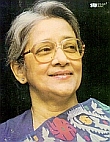 [by Ken Hunt, London] The Bengali singer Suchitra Mitra died on 3 January 2011 at her home of many years, Swastik on Gariahat Road in Ballygunge, Kolkata. She was famed as one of the heavyweight interpreters of the defining Bengali-language song genre form called Rabindra sangeet – or Rabindrasangeet (much like the name Ravi Shankar can also be rendered Ravishankar). ‘Rabindra song’ is an eloquent, literary, light classical song form, derived from the name of the man who ‘invented’ it, Rabindranath Tagore, the winner of the 1913 Nobel Prize for Literature.
[by Ken Hunt, London] The Bengali singer Suchitra Mitra died on 3 January 2011 at her home of many years, Swastik on Gariahat Road in Ballygunge, Kolkata. She was famed as one of the heavyweight interpreters of the defining Bengali-language song genre form called Rabindra sangeet – or Rabindrasangeet (much like the name Ravi Shankar can also be rendered Ravishankar). ‘Rabindra song’ is an eloquent, literary, light classical song form, derived from the name of the man who ‘invented’ it, Rabindranath Tagore, the winner of the 1913 Nobel Prize for Literature.
31. 1. 2011 |
read more...
 [by Ken Hunt, London] Bengal’s popular arts lost two of its major figures on 17 January 2011. – The actress Gita Dey (1931-2011) died in north Kolkata. From her debut as a child actor in 1937 in director Dhiren Ganguly’s film Ahutee, she reportedly appeared in some 200 Bengali films and thousands of stage dramas and folk plays.
[by Ken Hunt, London] Bengal’s popular arts lost two of its major figures on 17 January 2011. – The actress Gita Dey (1931-2011) died in north Kolkata. From her debut as a child actor in 1937 in director Dhiren Ganguly’s film Ahutee, she reportedly appeared in some 200 Bengali films and thousands of stage dramas and folk plays.
24. 1. 2011 |
read more...
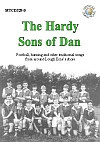 [by Ken Hunt, London] One of my fondest memories of Britain’s specialised music magazine scene of the 1980s into the 1990s is how little ego and rivalry there was for the most part. There were a couple of exceptions (no names, no pack drill) and, strange though it may seem, not a single ornery person from that bunch stayed within music criticism. Keith Summers wrote about music, collected it (as in made field recordings of such as Jumbo Brightwell, the Lings of Blaxhall, Cyril Poacher and Percy Webb as well as later contributing to Topic’s multi-volume series Voice of the People) and published magazines about it. He had the fall-back trade of accountant that funded his passions.
[by Ken Hunt, London] One of my fondest memories of Britain’s specialised music magazine scene of the 1980s into the 1990s is how little ego and rivalry there was for the most part. There were a couple of exceptions (no names, no pack drill) and, strange though it may seem, not a single ornery person from that bunch stayed within music criticism. Keith Summers wrote about music, collected it (as in made field recordings of such as Jumbo Brightwell, the Lings of Blaxhall, Cyril Poacher and Percy Webb as well as later contributing to Topic’s multi-volume series Voice of the People) and published magazines about it. He had the fall-back trade of accountant that funded his passions.
16. 1. 2011 |
read more...
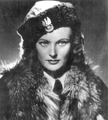 [by Ken Hunt, London] The Polish revue artist, singer and actress Irena Anders, born Irena Renata Jarosiewicz on 12 May 1920 in Bruntál, in what is nowadays the Czech Republic, went under the stage name of Renata Bogdańska. Her father was a Rutherian pastor while her mother came from the Polish gentry. She studied music formally at the National Academy of Music in Lviv. The invasion of Poland in September 1939 put paid to her studies and over the next few years the tides of war and the various fortunes of Poland, its citizens and army determined her own life’s course.
[by Ken Hunt, London] The Polish revue artist, singer and actress Irena Anders, born Irena Renata Jarosiewicz on 12 May 1920 in Bruntál, in what is nowadays the Czech Republic, went under the stage name of Renata Bogdańska. Her father was a Rutherian pastor while her mother came from the Polish gentry. She studied music formally at the National Academy of Music in Lviv. The invasion of Poland in September 1939 put paid to her studies and over the next few years the tides of war and the various fortunes of Poland, its citizens and army determined her own life’s course.
19. 12. 2010 |
read more...
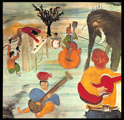 [by Ken Hunt, London] “Ten years ago on a cold dark night/Someone was killed ‘neath the town hall lights./There were few at the scene, but they all did agree/that the man who ran looked a lot like me.”
[by Ken Hunt, London] “Ten years ago on a cold dark night/Someone was killed ‘neath the town hall lights./There were few at the scene, but they all did agree/that the man who ran looked a lot like me.”
When those renegades from Canadian justice, The Band made their début album Music From Big Pink in 1968, they included a timeless-sounding song called Long Black Veil that they had learned from Leftie Frizzell, on whose 1959 version Marijohn Wilkin played piano. It had an eerie, old-time, murder ballad guilt to it and many people thought it was traditional. Marijohn Wilkin, the woman who set Danny Dill’s lyrics to music, to produce Long Black Veil died, aged 86, on 28 October 2006.
22. 11. 2010 |
read more...
 [by Ken Hunt, London] People’s appreciation of American folk music did not commence with the folk scare of the 1960s and the likes of the Kingston Trio, Peter, Paul and Mary, Joan Baez, Odetta, Buffy Sainte-Marie and Bob Dylan. A generation before them another folk revival, that similarly had no truck with segregation along racial lines, had been under way. Its crop of performers included progressives such as Josh White, Woody Guthrie, Huddie ‘Leadbelly’ Ledbetter and Pete Seeger. Like the next generation, the earlier one wrote new songs in various folk idioms, frequently darts with left-leaning barbs, dosed with class consciousness and social awareness.
[by Ken Hunt, London] People’s appreciation of American folk music did not commence with the folk scare of the 1960s and the likes of the Kingston Trio, Peter, Paul and Mary, Joan Baez, Odetta, Buffy Sainte-Marie and Bob Dylan. A generation before them another folk revival, that similarly had no truck with segregation along racial lines, had been under way. Its crop of performers included progressives such as Josh White, Woody Guthrie, Huddie ‘Leadbelly’ Ledbetter and Pete Seeger. Like the next generation, the earlier one wrote new songs in various folk idioms, frequently darts with left-leaning barbs, dosed with class consciousness and social awareness.
13. 9. 2010 |
read more...
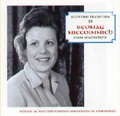 [by Ken Hunt, London] The Scots Gaelic song tradition had a relatively hard time of it during the twentieth century what with a diminishing mother-tongue population, a massive decline in Gaelic literacy and the steady encroachment of Scots and English. Seonag NicCoinnich, that is, Joan MacKenzie in the English, was one of four daughters born into a community where Gaelic was the first language – in Point on the Isle of Lewis in the Western Isles on 2 September 1929.
[by Ken Hunt, London] The Scots Gaelic song tradition had a relatively hard time of it during the twentieth century what with a diminishing mother-tongue population, a massive decline in Gaelic literacy and the steady encroachment of Scots and English. Seonag NicCoinnich, that is, Joan MacKenzie in the English, was one of four daughters born into a community where Gaelic was the first language – in Point on the Isle of Lewis in the Western Isles on 2 September 1929.
30. 8. 2010 |
read more...
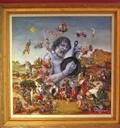 [by Ken Hunt, London] In January 1963 Bob Dylan was in Europe, flitting between London and Rome, bankrolled by an appearance as a folksinger in the BBC television drama, Madhouse on Castle Street. In London he fell into the company of, amongst others, the British folksingers Martin Carthy, Bob Davenport and Rory McEwen – like Eric von Schmidt, another exceptional painter, notably in McEwen’s case of botanical subjects – and was reunited with some compatriots, the songwriter and novelist Richard Fariñaa, Ethan Signer of the Charles Valley River Boys, and the musician and illustrator Eric von Schmidt.
[by Ken Hunt, London] In January 1963 Bob Dylan was in Europe, flitting between London and Rome, bankrolled by an appearance as a folksinger in the BBC television drama, Madhouse on Castle Street. In London he fell into the company of, amongst others, the British folksingers Martin Carthy, Bob Davenport and Rory McEwen – like Eric von Schmidt, another exceptional painter, notably in McEwen’s case of botanical subjects – and was reunited with some compatriots, the songwriter and novelist Richard Fariñaa, Ethan Signer of the Charles Valley River Boys, and the musician and illustrator Eric von Schmidt.
23. 8. 2010 |
read more...
 [by Ken Hunt, London] “When I met him,” says Mike Heron of the Incredible String Band of Nazir Ali Jairazbhoy, “he was working at the School of Oriental and African Studies, I think. He was teaching there. How I came across him was that [Elektra record producer] Joe Boyd introduced us to odd songs and things and Robin [Williamson] suggested we might have a sitar player on Mad Hatter’s Song. He actually played on Mad Hatter’s Song credited as ‘Soma’ because he asked not to have his name used, I don’t really know why. He probably had some contractual thing going. It says sitar by Soma but it’s actually him.”
[by Ken Hunt, London] “When I met him,” says Mike Heron of the Incredible String Band of Nazir Ali Jairazbhoy, “he was working at the School of Oriental and African Studies, I think. He was teaching there. How I came across him was that [Elektra record producer] Joe Boyd introduced us to odd songs and things and Robin [Williamson] suggested we might have a sitar player on Mad Hatter’s Song. He actually played on Mad Hatter’s Song credited as ‘Soma’ because he asked not to have his name used, I don’t really know why. He probably had some contractual thing going. It says sitar by Soma but it’s actually him.”
10. 8. 2010 |
read more...
[by Ken Hunt, London] The Benares-style tabla artist Chandrakant Shantaram Kamat was one of the mainstays of radio and recital in Pune. Between 1956 and 1991 he was an All India Radio (Pune) staff musician and he also did 50 years’ service at the Sawai Gandharva festival. Over the course of his career, he accompanied successive generations of top-notch principal vocalist, instrumentalist and dancers.
17. 7. 2010 |
read more...
« Later articles
Older articles »
 [by Ken Hunt, London] The Bengali singer Suchitra Mitra died on 3 January 2011 at her home of many years, Swastik on Gariahat Road in Ballygunge, Kolkata. She was famed as one of the heavyweight interpreters of the defining Bengali-language song genre form called Rabindra sangeet – or Rabindrasangeet (much like the name Ravi Shankar can also be rendered Ravishankar). ‘Rabindra song’ is an eloquent, literary, light classical song form, derived from the name of the man who ‘invented’ it, Rabindranath Tagore, the winner of the 1913 Nobel Prize for Literature.
[by Ken Hunt, London] The Bengali singer Suchitra Mitra died on 3 January 2011 at her home of many years, Swastik on Gariahat Road in Ballygunge, Kolkata. She was famed as one of the heavyweight interpreters of the defining Bengali-language song genre form called Rabindra sangeet – or Rabindrasangeet (much like the name Ravi Shankar can also be rendered Ravishankar). ‘Rabindra song’ is an eloquent, literary, light classical song form, derived from the name of the man who ‘invented’ it, Rabindranath Tagore, the winner of the 1913 Nobel Prize for Literature. [by Ken Hunt, London] Bengal’s popular arts lost two of its major figures on 17 January 2011. – The actress Gita Dey (1931-2011) died in north Kolkata. From her debut as a child actor in 1937 in director Dhiren Ganguly’s film Ahutee, she reportedly appeared in some 200 Bengali films and thousands of stage dramas and folk plays.
[by Ken Hunt, London] Bengal’s popular arts lost two of its major figures on 17 January 2011. – The actress Gita Dey (1931-2011) died in north Kolkata. From her debut as a child actor in 1937 in director Dhiren Ganguly’s film Ahutee, she reportedly appeared in some 200 Bengali films and thousands of stage dramas and folk plays. [by Ken Hunt, London] One of my fondest memories of Britain’s specialised music magazine scene of the 1980s into the 1990s is how little ego and rivalry there was for the most part. There were a couple of exceptions (no names, no pack drill) and, strange though it may seem, not a single ornery person from that bunch stayed within music criticism. Keith Summers wrote about music, collected it (as in made field recordings of such as Jumbo Brightwell, the Lings of Blaxhall, Cyril Poacher and Percy Webb as well as later contributing to Topic’s multi-volume series Voice of the People) and published magazines about it. He had the fall-back trade of accountant that funded his passions.
[by Ken Hunt, London] One of my fondest memories of Britain’s specialised music magazine scene of the 1980s into the 1990s is how little ego and rivalry there was for the most part. There were a couple of exceptions (no names, no pack drill) and, strange though it may seem, not a single ornery person from that bunch stayed within music criticism. Keith Summers wrote about music, collected it (as in made field recordings of such as Jumbo Brightwell, the Lings of Blaxhall, Cyril Poacher and Percy Webb as well as later contributing to Topic’s multi-volume series Voice of the People) and published magazines about it. He had the fall-back trade of accountant that funded his passions. [by Ken Hunt, London] The Polish revue artist, singer and actress Irena Anders, born Irena Renata Jarosiewicz on 12 May 1920 in Bruntál, in what is nowadays the Czech Republic, went under the stage name of Renata Bogdańska. Her father was a Rutherian pastor while her mother came from the Polish gentry. She studied music formally at the National Academy of Music in Lviv. The invasion of Poland in September 1939 put paid to her studies and over the next few years the tides of war and the various fortunes of Poland, its citizens and army determined her own life’s course.
[by Ken Hunt, London] The Polish revue artist, singer and actress Irena Anders, born Irena Renata Jarosiewicz on 12 May 1920 in Bruntál, in what is nowadays the Czech Republic, went under the stage name of Renata Bogdańska. Her father was a Rutherian pastor while her mother came from the Polish gentry. She studied music formally at the National Academy of Music in Lviv. The invasion of Poland in September 1939 put paid to her studies and over the next few years the tides of war and the various fortunes of Poland, its citizens and army determined her own life’s course. [by Ken Hunt, London] “Ten years ago on a cold dark night/Someone was killed ‘neath the town hall lights./There were few at the scene, but they all did agree/that the man who ran looked a lot like me.”
[by Ken Hunt, London] “Ten years ago on a cold dark night/Someone was killed ‘neath the town hall lights./There were few at the scene, but they all did agree/that the man who ran looked a lot like me.” [by Ken Hunt, London] People’s appreciation of American folk music did not commence with the folk scare of the 1960s and the likes of the Kingston Trio, Peter, Paul and Mary, Joan Baez, Odetta, Buffy Sainte-Marie and Bob Dylan. A generation before them another folk revival, that similarly had no truck with segregation along racial lines, had been under way. Its crop of performers included progressives such as Josh White, Woody Guthrie, Huddie ‘Leadbelly’ Ledbetter and Pete Seeger. Like the next generation, the earlier one wrote new songs in various folk idioms, frequently darts with left-leaning barbs, dosed with class consciousness and social awareness.
[by Ken Hunt, London] People’s appreciation of American folk music did not commence with the folk scare of the 1960s and the likes of the Kingston Trio, Peter, Paul and Mary, Joan Baez, Odetta, Buffy Sainte-Marie and Bob Dylan. A generation before them another folk revival, that similarly had no truck with segregation along racial lines, had been under way. Its crop of performers included progressives such as Josh White, Woody Guthrie, Huddie ‘Leadbelly’ Ledbetter and Pete Seeger. Like the next generation, the earlier one wrote new songs in various folk idioms, frequently darts with left-leaning barbs, dosed with class consciousness and social awareness. [by Ken Hunt, London] The Scots Gaelic song tradition had a relatively hard time of it during the twentieth century what with a diminishing mother-tongue population, a massive decline in Gaelic literacy and the steady encroachment of Scots and English. Seonag NicCoinnich, that is, Joan MacKenzie in the English, was one of four daughters born into a community where Gaelic was the first language – in Point on the Isle of Lewis in the Western Isles on 2 September 1929.
[by Ken Hunt, London] The Scots Gaelic song tradition had a relatively hard time of it during the twentieth century what with a diminishing mother-tongue population, a massive decline in Gaelic literacy and the steady encroachment of Scots and English. Seonag NicCoinnich, that is, Joan MacKenzie in the English, was one of four daughters born into a community where Gaelic was the first language – in Point on the Isle of Lewis in the Western Isles on 2 September 1929. [by Ken Hunt, London] In January 1963 Bob Dylan was in Europe, flitting between London and Rome, bankrolled by an appearance as a folksinger in the BBC television drama, Madhouse on Castle Street. In London he fell into the company of, amongst others, the British folksingers Martin Carthy, Bob Davenport and Rory McEwen – like Eric von Schmidt, another exceptional painter, notably in McEwen’s case of botanical subjects – and was reunited with some compatriots, the songwriter and novelist Richard Fariña
[by Ken Hunt, London] In January 1963 Bob Dylan was in Europe, flitting between London and Rome, bankrolled by an appearance as a folksinger in the BBC television drama, Madhouse on Castle Street. In London he fell into the company of, amongst others, the British folksingers Martin Carthy, Bob Davenport and Rory McEwen – like Eric von Schmidt, another exceptional painter, notably in McEwen’s case of botanical subjects – and was reunited with some compatriots, the songwriter and novelist Richard Fariña [by Ken Hunt, London] “When I met him,” says Mike Heron of the Incredible String Band of Nazir Ali Jairazbhoy, “he was working at the School of Oriental and African Studies, I think. He was teaching there. How I came across him was that [Elektra record producer] Joe Boyd introduced us to odd songs and things and Robin [Williamson] suggested we might have a sitar player on Mad Hatter’s Song. He actually played on Mad Hatter’s Song credited as ‘Soma’ because he asked not to have his name used, I don’t really know why. He probably had some contractual thing going. It says sitar by Soma but it’s actually him.”
[by Ken Hunt, London] “When I met him,” says Mike Heron of the Incredible String Band of Nazir Ali Jairazbhoy, “he was working at the School of Oriental and African Studies, I think. He was teaching there. How I came across him was that [Elektra record producer] Joe Boyd introduced us to odd songs and things and Robin [Williamson] suggested we might have a sitar player on Mad Hatter’s Song. He actually played on Mad Hatter’s Song credited as ‘Soma’ because he asked not to have his name used, I don’t really know why. He probably had some contractual thing going. It says sitar by Soma but it’s actually him.”